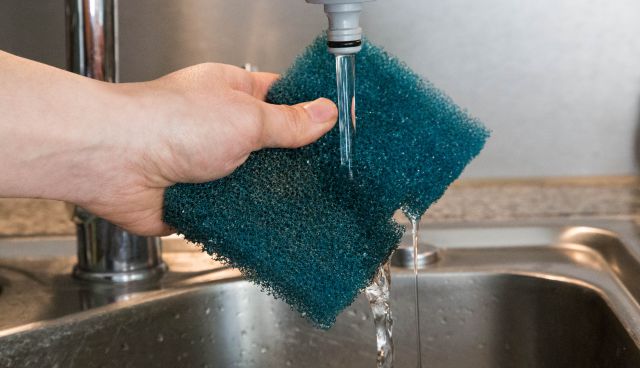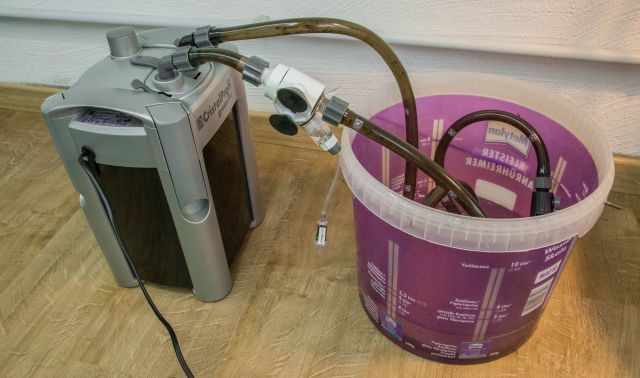Almost any aquarium hobbyist has been faced with this situation: You have bought a used external filter or would like to use such a filter with another aquarium. To prevent the transmittal of germs and especially algae spores (such as the pesky Cladophora sp.), disinfecting the filter is highly recommendable.
To thoroughly clean a used filter you can fall back on various options. Vinegar or chlorine cleaners are frequently used because of their strong disinfecting properties, however, they can cause the rubber seals and hoses to lose their plasticizers and make them hard. The repeated use of these agents can therefore lead to leaks. For filter cleaning, commercially available citric acid for descaling coffee makers and such is a much better choice than vinegar or chlorine cleaner, which, in addition to its property as a limescale remover, also acts slightly antiseptic.
First, the entire filter, including the baskets and the filter media is roughly cleaned. All internal parts need to be rinsed under running water. Very fine and very dirty filter media (like fleece) should better be removed and replaced.

If it's at all technically possible, a general good cleaning would be a good opportunity to remove, disassemble and clean the impeller from the filter head. Subsequently, all the components are reassembled in their due order. After that, fill the filter with fresh water, close it and re-connect the hoses. Then the ends of the hoses for the filter inlet and the filter outlet are put into a bucket, which has been positioned next to the external filter beforehand.

Inline technology such as an external heater or an inline diffuser - if present - can stay connected to the hose line, given that those elements are also in need of cleaning (which is advisable anyway). To keep water from leaking, the CO2 line of the inline diffuser should be either plugged shut or secured with a check valve. Fill the bucket with a sufficient amount of water, close the filter circuit, and connect the external filter to the mains. The hose end connected to the filter suction side should always be under water. If necessary, this end of the filter hose is weighed down with a stone, for example, so that it really cannot rise to the surface and draw air. With this being safeguarded, the filter should run without problems. For the next step it is important to determine the complete water volume. Add the amount of water in the bucket to the volume of the filter. You'll need the total amount of water to determine the amount of citric acid you have to add for cleaning.
Dosage
Dose the citric acid powder according to the instructions for cleaning coffee makers or kettles. You'll find these on the package or in the leaflet. As a rule, about 40 to 60 g of citric acid powder per liter of water are recommended, however, it is crucial to keep to the manufacturer's instructions. Add the correct amount depending on the total volume of the water you use for cleaning (in the filter and bucket) to the bucket and mix well. Within a short time the powder will dissolve in the water, the water movement caused by the flow helps, too.
Let the filter run for a day or two in this setup. The final step is to disassemble the filter again and to properly rinse all the components. Now they are ready for use.
Disclaimer
Please read and observe the safety instructions of the respective chemical cleaning agent before use. Never mix with other detergents! Similarly, you should clarify with the manufacturer of your filter whether disinfecting with citric acid will affect the warranty. Application at your own risk! We can assume no liability for any damage that may occur.